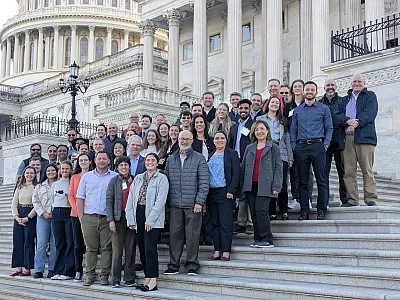Modern wheat classes converge in grain mineral nutrition—and that’s not great news
Potential paths forward for addressing nutritional deficiencies in Pacific Northwest wheat

- Since the Green Revolution, yields of wheat have increased, but concentrations of micronutrients like zinc, iron, copper, and manganese in the grain have decreased, impacting global nutrition.
- A new study in Crop Science found that despite variety and location differences, modern soft white and hard red wheat grown in the Pacific Northwest have comparable mineral concentrations—generally aligned with wheat from other global regions.
- Improving grain nutrition will not be easy as there are numerous economic and practical barriers. Options may involve selective breeding, soil management, and promoting whole grain consumption.
When it comes to wheat, many have asked: Do we want more quantity—i.e., higher yields—or quality, i.e., higher mineral concentrations in each grain? Previous studies over the past several decades indicate that whereas wheat yields have increased markedly since the 1960s, grain mineral density has decreased. A new study of wheat grown in the Pacific Northwest adds to this picture.
Pacific Northwest wheat—about 90% of which is exported, much to Asia—is responsible for feeding millions of people, many of whom rely on staple foods like wheat as a primary source of minerals. While the increasing yields have helped stave off hunger, the decreasing mineral concentrations are getting noticed. There are widespread mineral deficiencies documented in human populations worldwide, including in those that consume this wheat as a staple food source.
“We’ve got to guard against losing yield. We need to maintain good crop yield and also get some of these nutrient concentrations up.”
Scientists have for some time looked at how to balance nutrient load with production, disease and pest resistance, drought tolerance, and all the other factors they consider in modern grain breeding. It’s “a long game,” says ASA and SSSA member Steve McGrath, a plant and soil scientist at Rothamsted Research in the U.K. And it’s a hard but important one. Yields may be reduced because of storms, droughts, high temperatures, and other hazards, McGrath says. “We’ve got to guard against losing yield. We need to maintain good crop yield and also get some of these nutrient concentrations up.” Exactly how that is best done is as yet unknown. But figuring it out starts with understanding the current situation and then determining how current grain mineral concentrations vary based on soils and environmental components and grain varieties available as well as on how the wheat is prepared and consumed.
A brief history of wheat
Humans started farming wheat around 10,000 years ago in the Fertile Crescent in the Middle East. It was brought to the U.K., about 5,000 years ago, and to the United States in the late 1700s. The U.S. led the world in wheat production by the 1870s, and American wheat production by value increased fairly steadily over time, peaking in the early 1980s.
Today, wheat is the third-largest field crop (by planted acreage, production, and farm receipts) in the U.S. The country is the fourth-largest producer of wheat in the world. The Pacific Northwest—encompassing Idaho, Oregon, and Washington—is the highest-yielding wheat-production area in the country, producing 8.8 million metric tons of wheat in 2020 (a value of $1.8 billion). Three-quarters of that is winter wheat, primarily the soft white wheat class.
The Green Revolution
Globally, yields started increasing quite significantly in the 1960s, marking the start of the so-called Green Revolution. Wheat used to be a tall leggy plant with a relatively low harvest index, meaning the ratio of grain yield to total shoot biomass was small. “If you think about the structure of wheat, you have this relatively thin stalk with all the grain that accumulates at the head,” says ASA and CSSA member Curtis Adams, a crop ecologist at the USDA-ARS, based in Oregon. As grain breeders worked to increase grain yields to feed a growing population, they ended up with a widespread challenge called lodging, in which the grain-heavy heads of tall wheat plants were falling over in wet or windy conditions, reducing grain yields. “Lodging was a real problem,” says Adams, lead author of a recent paper on wheat grain mineral density in the Pacific Northwest, which was published in Crop Science.

So in the mid-1960s, scientists introduced semi-dwarfing genes to wheat; subsequently, plants were shorter, and vegetative biomass shrunk relative to grain. Prior to this, the ratio between vegetative material and grain was about 70% vegetative to 30% grain. This semi-dwarfing of the plants allowed yields to increase substantially, which was “pivotal in making higher yields possible and an enormous event in the progress of feeding more people,” says Adams, an ASA and CSSA member.
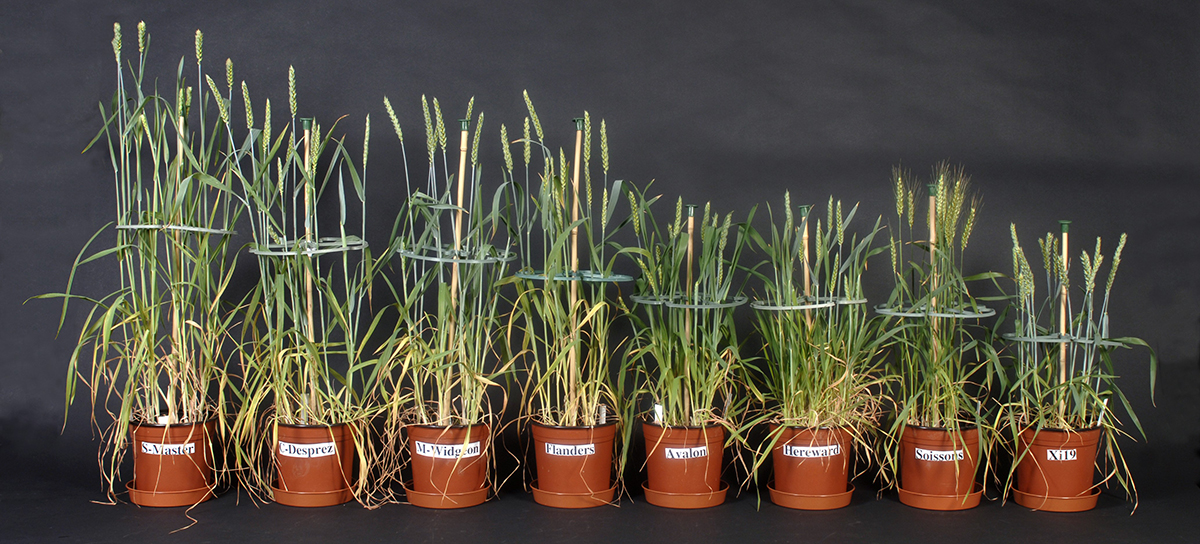
Since the Green Revolution, wheat plants now produce about 50% green material to 50% grain, says McGrath, who was not involved in the new study. With this change, grain mineral density began to decline.
The decline
“We first spotted this decrease in concentrations of nutrients in grain around 2005,” McGrath says. Rothamsted Research has been studying wheat on-site since 1843. They run experiments on everything from fertilizers to genetics to weather and have the longest record of wheat changes in the world. Wheat nutritional content remained basically steady from 1845 through the mid-1960s, McGrath and his colleagues reported in a 2008 paper in the Journal of Trace Elements in Medicine and Biology, one of the first to recognize wheat’s changing mineral concentrations. Then, with the introduction of semi-dwarf, higher-yielding varieties, concentrations of micronutrients like zinc, iron, copper, and manganese started to decrease. The concentration of these micronutrients in the soil, meanwhile, remained steady, so these declines weren’t because of mineral depletion in the soil.
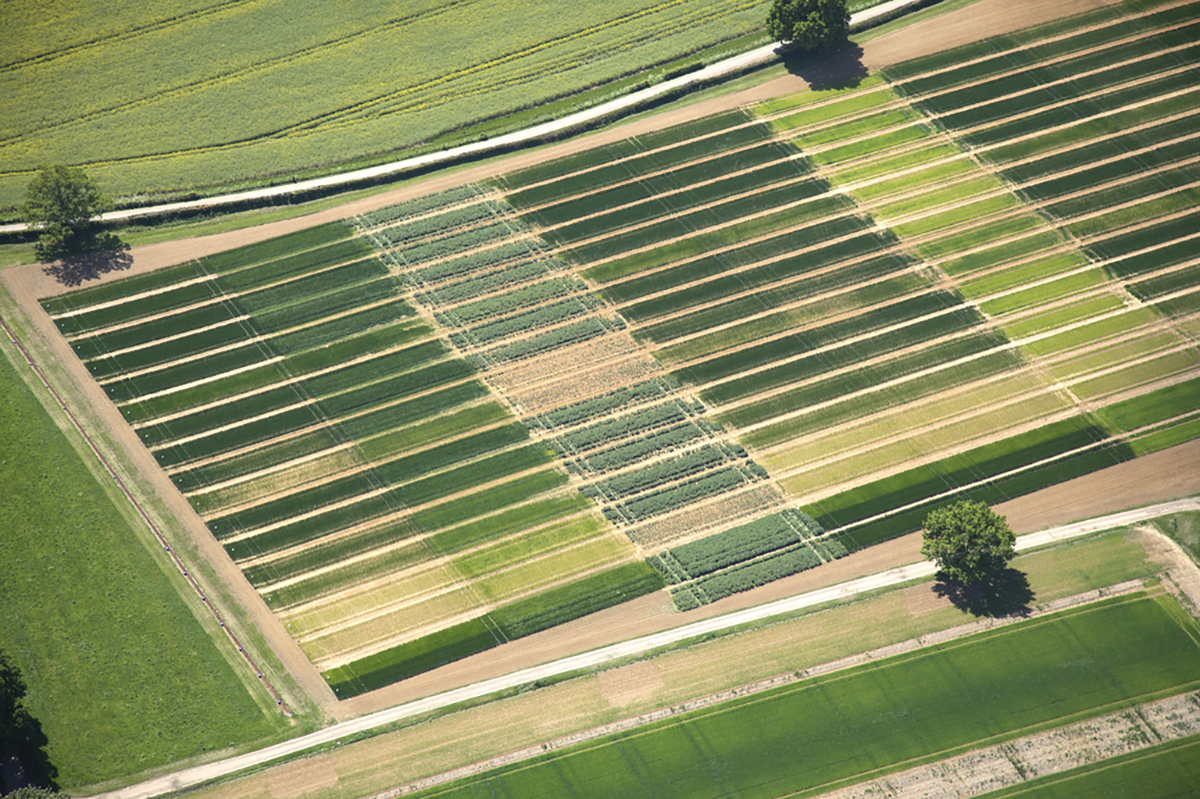
What we’re seeing is a “dilution effect,” McGrath says. As these smaller plants produce a huge amount of grain, the nutrients that are pulled from the soil into the plant and into the grains are spread thinner with less going into each individual grain. And it’s happening for the macronutrients as well, McGrath says. The highest-yielding plants often have the lowest grain nutrient concentrations.
There are a handful of solid studies on the topic of grain mineral density in wheat, McGrath says. All have shown the same declining trends since the mid-1960s. Nutrients like phosphorus, potassium, magnesium, calcium, manganese, iron, zinc, and copper have all decreased. Carbohydrates have increased and proteins have decreased, per grain, as well. With the new report on wheat in the Pacific Northwest, Adams and his colleagues “have added to the data, the weight of evidence,” McGrath says. “It’s interesting that they’re looking at a slightly different wheat to ours: Ours is a hard white bread wheat, and they’re looking at soft white wheat and hard red wheat, but we see the same effects,” he says.
Understanding the changes
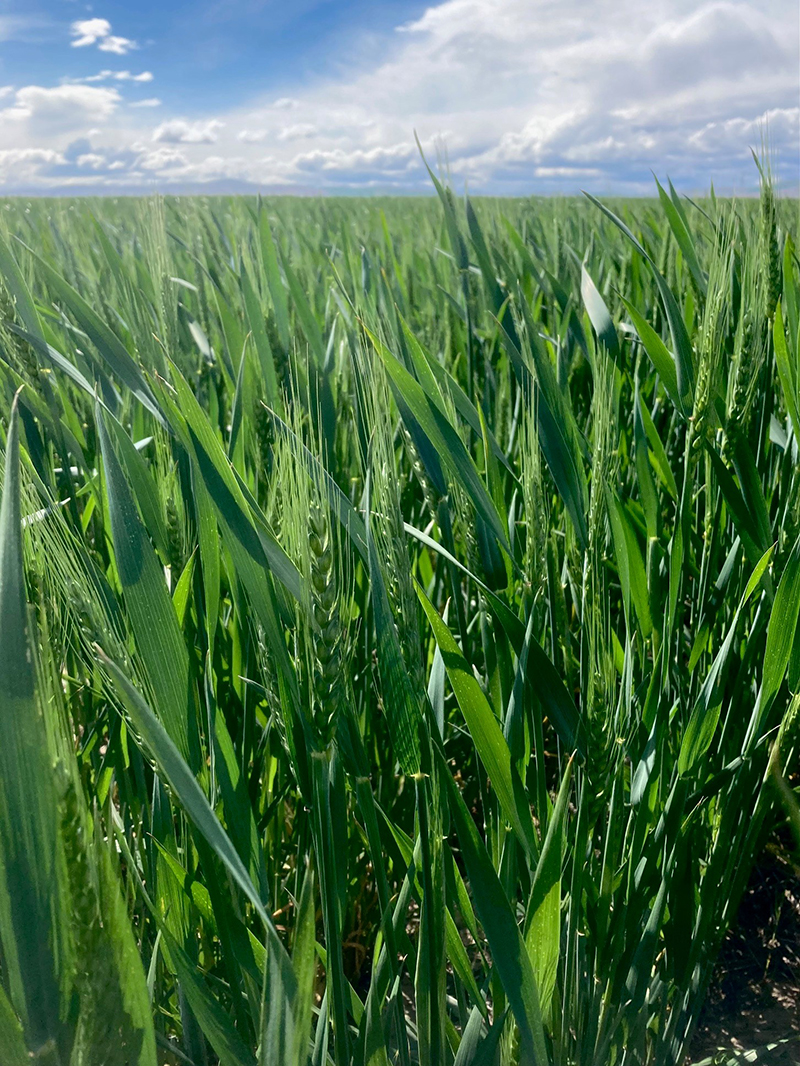
Adams and his colleagues set out trying to understand grain mineral concentrations and density with an eye toward human health and nutrition, Adams says. Two billion people are deficient in zinc in developing countries. Two billion people worldwide have anemia with one in four people deficient in iron in the U.S. as well. If we can identify wheat varieties that are more prone to accumulating particularly high concentrations of minerals like zinc and iron, we could potentially breed more nutritional wheats or grow (or export) them where the need is greater, Adams notes.
There are documented widespread nutrient deficiencies among people worldwide, including populations who eat Pacific Northwest wheat as a staple food. Zinc, iron, selenium, and iodine are the biggest problems. Zinc deficiency can cause problems like impaired immunity, slow wound healing, and premature birth if a pregnant mother is deficient. Iron deficiency causes everything from anemia to heart palpitations while lack of iodine causes everything from hypothyroidism to cognitive impairment. It’s important to understand and work to improve the nutritional quality of staple foods, Adams says.
"Because low grain ash content, a bulk measure of minerals, is a breeding target for soft wheat, there has been concern about its modern nutritional value."
One previous study suggested that Pacific Northwest hard red wheat was historically less nutritious than soft white wheat, but that the grain mineral density of soft white wheat has declined over time. Little else was known about this, Adams says. “But because low grain ash content, a bulk measure of minerals, is a breeding target for soft wheat, there has been concern about its modern nutritional value.” Adams and his team compared these two wheat classes against each other and to reports of wheat mineral density from around the world.
The team conducted a four-site-year trial in Oregon. They also examined many individual soft white and hard red wheat varieties at different sites across Oregon, Washington, and Idaho to compare the varieties and classes and to explore the impact of diverse environments and growing conditions. Then they reviewed the published literature and compared their results with published concentrations of minerals (phosphorus, potassium, magnesium, calcium, manganese, iron, zinc, and copper) in wheats around the world. They found that although individual sites and wheat varieties vary, sometimes considerably, there were no significant differences between classes of wheat overall.
The Pacific Northwest wheat classes are comparable to each other in grain mineral density and comparable to wheats produced elsewhere. What seems to matter most is soil nutrient availability and, to a lesser degree, the choice of wheat variety. In areas where more zinc was present in the soil, for example, zinc was found in the grains in higher percentages, Adams and his colleagues found. Additionally, the team observed significant variation in grain mineral concentrations among modern varieties. Importantly, Adams says, varieties that accumulated relatively more grain zinc did so across all test environments, regardless of yield and soil nutrient conditions.
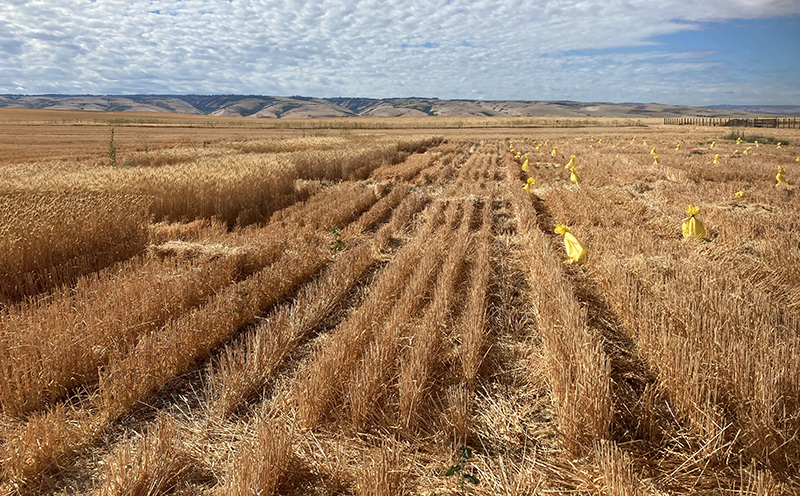
Grain mineral densities depend on plant processes that control mineral uptake and storage, soil mineral availability, environmental conditions, and their interactions, Adams and colleagues noted. But soil nutrient availability at the production site seems to be the most influential factor.
Improving nutritional quality
There can be marked differences from site to site in grain mineral concentrations, Adams says. “If there’s a lot of zinc available in the soil, you’re likely to get higher zinc uptake and then have a higher nutritional value.”
So in theory, to increase the nutritional value, you could drop a bunch of zinc or other micronutrients on the soil. However, Adams says, micronutrient fertilizers are expensive, and they don’t generally increase yield. So it’s often not economically advantageous to farmers to increase those nutrients. And not all nutrients can be provided to soils as fertilizer. Selenium works, for example, but zinc doesn’t seem to work as well, McGrath says. There can be additional issues, like what those nutrients might do to the soil or plants. Too much magnesium, for example, could restrict plant root development or limit the plant’s uptake of other minerals like potassium while too much phosphate could reduce the utilization of zinc.

Bioengineering is another possibility, but it’s fraught and time-consuming, McGrath says. For one thing, many countries in the world—including many where nutritional deficiencies are substantial—forbid genetically modified foods. For another, reversing the decades of breeding we’ve put in to make wheat varietals that are disease or pest resistant or high yielding to instead focus on nutrients would be “quite tricky,” he says. You don’t want to lose those properties either, he adds.
There’s also the question of which particular nutrients to focus on. Projects attempting to breed for specific nutrients in crops have, so far, focused on one element at a time. The HarvestPlus program works in developing countries on such biofortification efforts with staple crops, including wheat, rice, maize, and sweet potatoes, to increase zinc, vitamin A, iron, or other nutrients. These breeding programs that target specific minerals to solve regional malnutrition challenges have promise but take time and effort—and funding.
Micronutrient deficiency is a huge problem, McGrath says, so it’s important to think about how we can address it. Breeding efforts and fertilizers can help, but we probably need to also start thinking about our diets, he says.

One major dietary change that could make a big difference is using whole grains instead of refined flour, Adams says. Adams and his colleagues examined what nutrient levels made it through the refining process on the Pacific Northwest wheats. They found that up to 90% of individual nutrients were removed through refining. So what about refined flour that we all eat every day in pastas, breads, and cereals? It’s lost a great deal of its minerals and other nutritional value, such as fiber content. Getting everyone to switch to whole grains is not easy, though. Refined wheat has a much longer storage life than whole wheat, and it’s currently cheaper. It also bakes differently, so many companies making wheat products on a commercial scale may not want to make the switch. People have also shown reticence at the individual level. “It’s not likely that we’re going to have a massive turnaround when suddenly everyone’s consuming whole-grain products,” Adams says. “So I think something researchers can do is look at ways we can get more of the nutrients into the endosperm,” which is the primary grain component in refined flour.
Much of the focus on grain mineral density so far has been on trying to breed wheat varieties that have higher grain nutrient density, Adams says. That’s a good place to start, but this study highlights how much variation we have in the environment, he says. “So we can definitely work on targeting particular environments”—sourcing the wheat from places where there’s high mineral uptake of a particular micronutrient to get to people in need. We can also target wheat varieties that are prone to accumulating higher concentrations of minerals in the whole grains and especially in the endosperm, he says.
Indeed, McGrath says, “we need a ground-to-grain-to-human, multipronged approach to addressing nutrition needs while at the same time maintaining food security.”
Dig deeper
Check out the study highlighted in this article:
Adams, C. B., Kongraksawech, T., Ross, A., Long, D. S., Neely, C., Marshall, J., Graebner, R., Reardon, C. L., & Liang, X. (2025). As grain mineral densities have declined over time, have densities converged across wheat classes?—Insights from the US Pacific Northwest and worldwide benchmarks. Crop Science, 65, e21409. https://doi.org/10.1002/csc2.21409
Text © . The authors. CC BY-NC-ND 4.0. Except where otherwise noted, images are subject to copyright. Any reuse without express permission from the copyright owner is prohibited.





